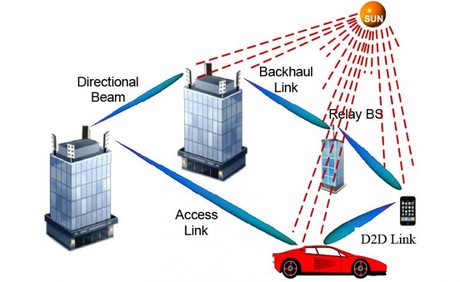Hot, sunny days could slow 5G

Tests at 60 GHz show 5G could see losses of more than 15% on sunny days.
Hot, sunny weather could degrade 5G cellular transmissions by more than 15%, but a university engineer says research will guide solutions.
To test the effect of bright sunshine effect on high-speed transmissions, Ahmed Sulyman, an associate professor in Embry-Riddle Aeronautical University’s Department of Computer, Electrical & Software Engineering, teamed up with colleagues in Saudi Arabia to publish the first comprehensive analysis of solar radio emissions on land-based wireless communications systems at 60 GHz bands.
The conclusion? Future 5G cellular systems using 60 GHz bands might work better at night, as solar radio emissions seem to degrade such transmissions.
“This suggests there could be more dropped calls and lost data transmission, and the data rate could be lower during the day compared to night-time,” said Sulyman.
He added, however, that effective communication links at 60 GHz are possible at distances up to 134 m indoors and up to 110 m outdoors, even in hilly, dense urban areas — particularly if antennas are aimed toward each other.
“Engineers can always work around problems if they understand them properly,” said Sulyman. “Once we understand the exact nature of solar radio interference on 5G networks, we can plan for it by optimising links for daytime and night-time operations.”
He noted that satellite televisions work well during the day and at night because planners offset any transmission degradation so seamlessly that consumers never know the difference.
“These results will help 5G cellular network planners to prepare appropriate link budgets when deploying 60 GHz radio outdoors in extremely hot and sunny weather,” he said.
For his study, Sulyman and colleagues tested various system configurations such as line-of-sight and non-line-of-sight set-ups.
First they configured an indoor experiment in order to determine the ‘path loss exponent’, or PLE, resulting from solar radio emissions.
Then, they compared those results with measurements gathered at two sunny outdoor locations in Riyadh, Saudi Arabia — a hilly region with high-rise buildings and vegetation, and similar terrain with very little vegetation.
In hot and sunny weather, PLE values increased by 9 to 15.6%, compared to measurements captured at night in cool, clear weather. In other words, the integrity of transmissions were negatively affected by strong sunshine.
The study has been published in a special edition of IEEE Transactions on Antennas and Propagation (Volume 65, Issue 12, Dec 2017, pp 6624–6635).
RFUANZ report: setting the frequency for success in 2025
Last year brought a lot of internal change for RFUANZ, but the association has hit the ground...
ARCIA update: an extended event calendar for 2025
With the addition of Tasmanian events and a conference in Adelaide in September, 2025 will see...
ARCIA update: plans for 2025
ARCIA will be holding a mixture of workshop, conference and networking events in 2025, in the...





